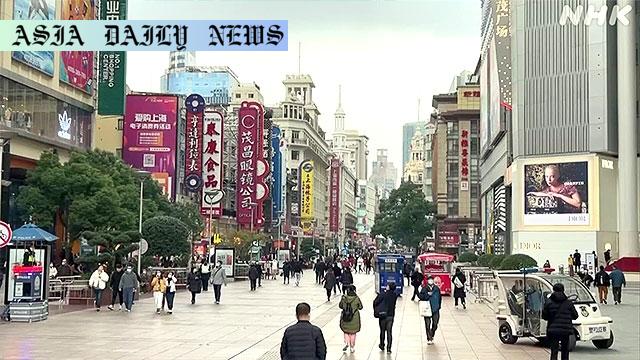Manufacturing: China’s key manufacturing index stays below 50 for two straight months as uncertainties around trade tensions persist.
China’s manufacturing PMI fell below 50 for two months, indicating economic contraction.
The index for May was at 49.5, slightly better than April but still reflecting contraction.
Large enterprises showed resilience at 50.7, while midsized and small firms declined.
Trade truce between China and the US temporarily eased tension despite persisting uncertainties.

China’s Manufacturing Index Highlights Broader Economic Concerns
China’s Purchasing Managers’ Index (PMI) for the manufacturing sector recorded a value of 49.5 in May, extending its contraction for the second consecutive month. While this figure showed a slight improvement of 0.5 points compared to April, it remained below the critical 50-point threshold. The 50-point mark separates sectors experiencing growth from those facing contraction. This data, meticulously gathered from a survey of 3,200 manufacturers by the National Bureau of Statistics, underscores the ongoing slowdown within Asia’s largest economy.
Notably, the performance of different company sizes varied significantly. Large enterprises displayed resilience by managing an index of 50.7, signifying mild expansion. In contrast, midsize firms struggled with a contraction indicated by 47.5, while smaller businesses hovered at 49.3, unable to cross into growth territory. The disparity highlights structural challenges within China’s economic framework, with larger corporations better positioned to weather external and internal pressures.
Meanwhile, the service sector’s performance also reflected caution, with its non-manufacturing index dropping slightly to 50.3 in May, reflecting sluggish growth. Combined, these metrics serve as a sobering reminder of challenges looming over China’s path to economic recovery, particularly in the wake of protracted trade tensions with the United States.
Trade Tensions and Uneasy Truce
Unresolved trade disputes between China and the United States add another layer of uncertainty. Though a trade truce reached in May temporarily reduced mutual tariffs by 115 percentage points and suspended a portion of these for 90 days, questions linger over whether this will lead to a permanent resolution. With both nations hesitant to yield significant ground, the risk of setbacks remains high, undermining investor confidence and the broader trade environment.
The fragility of this détente is evident. While hopes for constructive dialogue persist, any breakdown in negotiations could escalate economic hostilities. The manufacturing sector, already grappling with weak demand, volatile raw material costs, and supply chain disruptions, stands to bear the brunt of renewed friction. The specter of economic retaliation further complicates the trajectory for both nations.
Implications for the Global Economy
The implications of China’s manufacturing slowdown extend beyond its borders. As the world’s second-largest economy and a major trading partner for numerous nations, a contraction within China could trigger ripple effects globally. Emerging markets reliant on China for exports may see diminished demand, while developed economies might confront disruptions in supply chains intertwined with Chinese production hubs.
Western nations, including the United States, are likely to feel reverberations in the form of market volatility, fluctuating commodity prices, and constrained consumer spending optimism. Policymakers worldwide remain vigilant, tracking China’s economic indicators closely to recalibrate their strategies, from trade negotiations to monetary adjustments, and mitigate potential fallout.
Commentary
Understanding the Broader Implications of China’s Manufacturing Decline
The recent report on China’s manufacturing sector paints a complex picture of a country grappling with multifaceted challenges. While the slight uptick in May’s PMI to 49.5 signals a potential stabilization, the sub-50 reading undeniably raises concerns about whether robust growth can be achieved in the near term. What stands out is the dichotomy between larger enterprises that seem better equipped to navigate headwinds and smaller firms that are struggling. This gap underscores the need for structural reforms to bolster the resilience of China’s manufacturing ecosystem at all levels.
Equally pressing is the role of lingering trade tensions with the United States. Although the temporary truce reached in May is a welcome reprieve, it is by no means a definitive solution. The history of trade disputes between the two economic superpowers has been marked by volatility, making investors and stakeholders wary of placing complete trust in current agreements. A return to tit-for-tat tariffs could exacerbate market uncertainties, especially as global economies strive to recover from recent downturns.
Finally, the global significance of China’s economic health cannot be overstated. Whether through its impact on supply chains, commodity markets, or overall trade dynamics, China’s trajectory directly influences economic outcomes worldwide. Policymakers must collaborate to ensure that the challenges faced by the Chinese manufacturing sector do not spiral into a global slowdown. While the situation is fraught with challenges, the hope is that strategic compromises and reforms might lay the groundwork for sustained growth on both domestic and international fronts.


